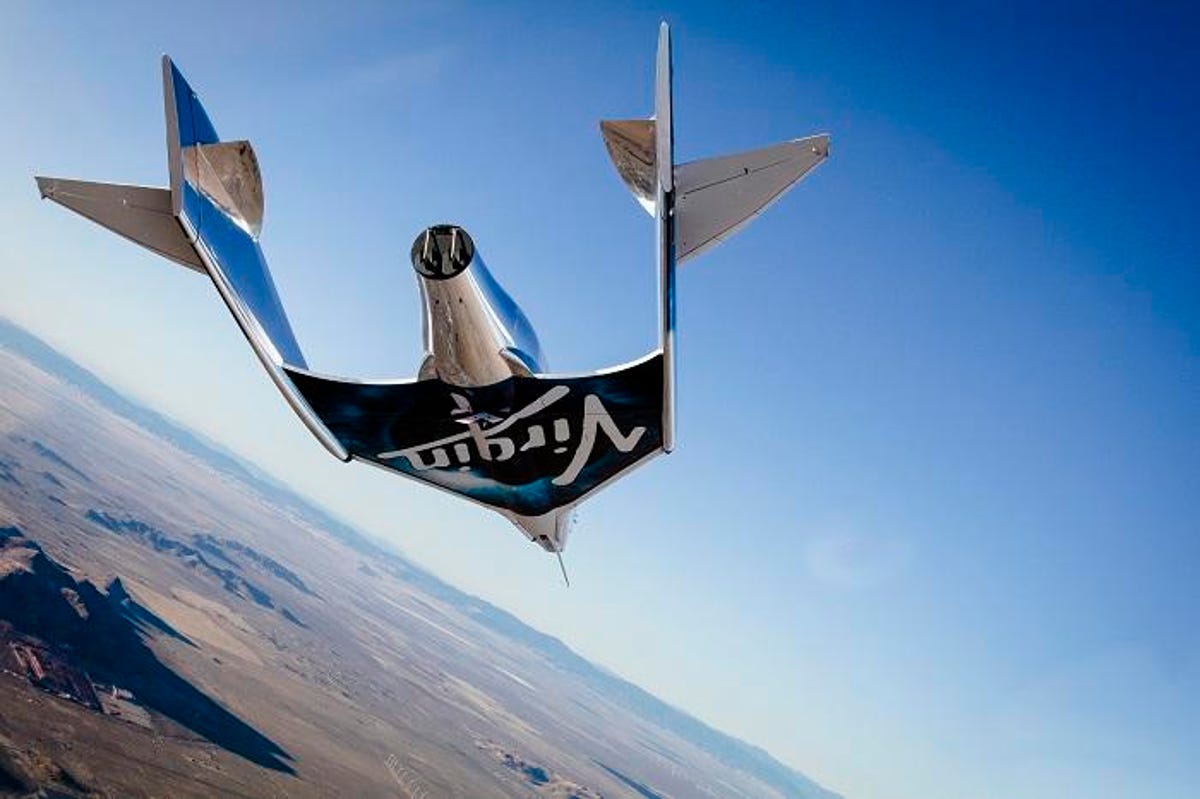Flying high at the Mojave Air and Space Port
It's where the coolest -- and biggest -- planes are reaching for the stars

The right stuff
There's always something going on -- or flying high -- at Mojave Air and Space Port.
The 3,300-acre facility in the California high desert, located about 40 miles west of where Chuck Yeager broke the sound barrier, is home to more than 60 companies pushing the engineering envelope. Its high-profile tenants include mogul Richard Branson's Virgin Galactic.
VSS Unity
In 2016, Virgin Galactic rolled out its latest SpaceShipTwo (SS2) craft at a Mojave spaceport hanger. The eight-person, suborbital space plane aims to make astronauts of tourists. It's currently in the test-flight stage.
Stratolaunch
Voyager designer Burt Rutan's Scaled Composites is building this behemoth, literally the world's largest plane by wingspan (385 feet), for Microsoft co-founder Paul Allen's space-launch company. It emerged from its Mojave hangar for an a photo-op in May 2017.
Roton Atmospheric Test Vehicle (ATV)
In 1999, this helicopter-inspired concept craft took three test flights. But the reusable commercial transport never came to pass. Today, the ATV stands at the spaceport's Legacy Park "as a daily reminder to pursue your dreams without fear of failure."
TWERP
In 2016, Wasabi Air Racing's Twin-Engine Research Project (aka TWERP) flew, crashed and ultimately reminded us that space -- if not the Mojave spaceport -- is not the sole domain of billionaires.
SpaceShipOne
Mojave has called this rocket-powered aircraft's 2004 suborbital, edge-of-space flight -- a history maker for a privately financed, manned craft -- "arguably [its] biggest 'first.'" Like the Stratolaunch, SpaceShipOne was built by Scaled, with backing from Paul Allen.
Mojave Air and Space Port
A man walks across the top of a hangar at Mojave Air and Space Port in 2013.
Endeavour
In 2012, the retired, California Science Center-bound space shuttle honored the spaceport with a flyover -- and with the help of a 747.
VSS Enterprise
Virgin Galactic's first SpaceShipTwo (SS2) vessel got a boost from its mothership, WhiteKnightTwo, in a captive-carry test flight in 2010.
Voyager
The spaceport counts this aircraft among its homegrown ground-breakers. In 1986, the plane flew around the world -- nonstop and without refueling -- in nine days. It was enshrined by the National Air and Space Museum.
EZ-Rocket
In 2005, XCOR Aerospace's EZ-Rocket became the first piloted rocket plane to take off and land -- a so-called "point-to-point" flight (of about 10 miles).
Boneyard
In aviation, a boneyard is a place where planes go to be stored and sometimes scrapped for parts. The same holds at Mojave, except its bones are unusually big. (The boneyard, like the rest of the facility, is not open to tourists.)
'Space is hard'
In 2014, the VSS Enterprise crashed in the desert shortly after being separated from WhiteKnightTwo; co-pilot Michael Alsbury died.
"Space is hard -- but worth it," Virgin's Richard Branson said at the time.
Rocket Racer
This rocket-propelled prototype, designed for the "before-its-time" Rocket Racing League, was built at the Mojave facility by XCOR Aerospace.
XCOR Lynx
This cockpit mock-up of XCOR's planned suborbital spacecraft sits in the firm's hangar in 2013. The Lynx was designed to be "supersonic in one minute, weightless in five minutes."
Rocket-engine test
A 40-pound thrust-rocket engine meant for the Lynx is fired up at the spaceport in 2013. In the summer of 2017, the Lynx and other XCOR projects were left in limbo after the company laid off all of its employees.
Tower watch
Opened in 1935 as the Mojave Airport, the small, rural airfield became a Federal Aviation Agency-certified spaceport in 2004. It was rechristened the Mojave Air and Space Port in 2013.
National Test Pilot School
The not-for-profit training organization, offering professional courses, a master's program and more, was founded in 1981. Its 42,000-square-foot classroom hangar was opened in 1987.
Run, run, runaway
More than 3,000 feet of runway have been added to the Mojave grounds in the past decade, according to the spaceport.
Action!
According to the Internet Movie Plane Database, the big-screen "Flags of Our Fathers" and "Die Hard 2" are among the Hollywood productions filmed in and around the Mojave hangars.
Crash truck
When things go wrong, an on-site rescue-and-fire operation is ready to go.

